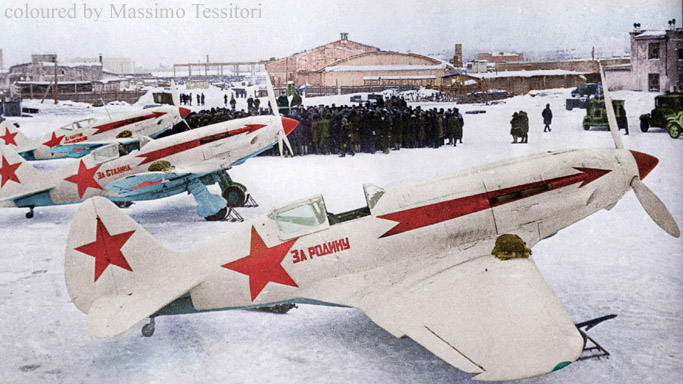
|
|
Updated on 1 July 2023
| |
|

These three MiG-3s are between the most known and iconic ones; they could be
between the last MiG-3 even built.
The photo was shot on February 23, 1942, in the repair facilities of Factory
1, when they were delivered to 172 IAP.
The photo shows compressed air bottles on the ground, parachutes on the wings
and wheel stops.
 |
The visual characteristics of the planes were:
|
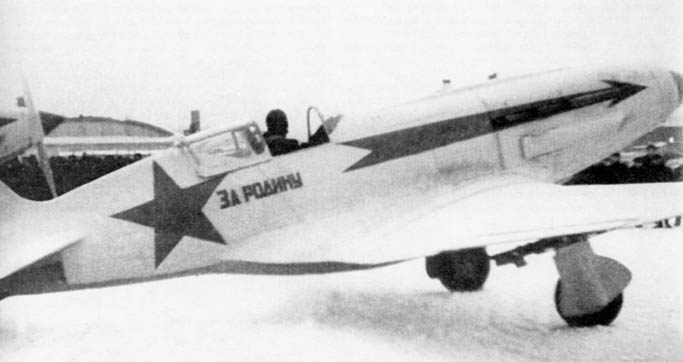 |
"Za rodinu" (For the homeland) was flown by pilot D. Latyshev Image from "Unknown battles on the Moscow skies" of Hazanov
|
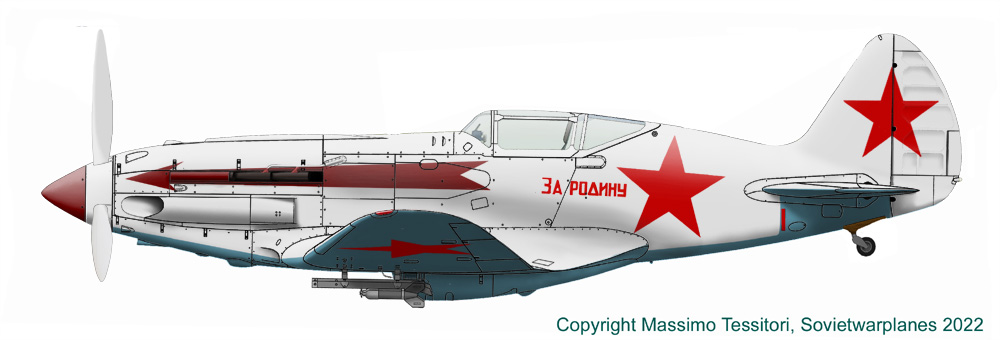 |
|
| The second aircraft of the row had the "Za Stalina" ("for Stalin") slogan on its sides; it differs from the first one for the slightly longer arrow, and the spinner with the same red as stars.
The third aircraft has the "Za partii bolshevikov" ("for Bolshevik Party") slogan on its sides; it is equipped with radio mast (but no radio box is visible); the arrow is about as long as on the first aircraft. |
|
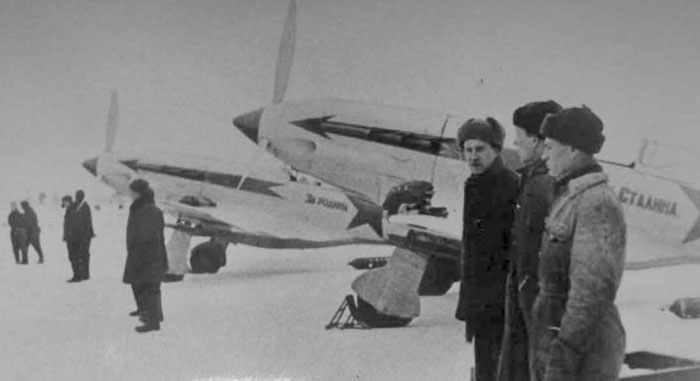 |
Another photo of Za Stalina. Note that the position of the slogan is not perfectly specular. Image from http://ava.org.ru/iap/122.htm |
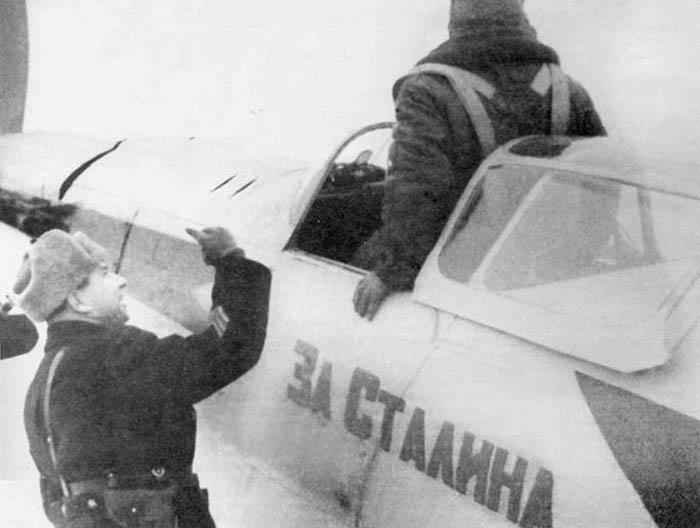 |
Image from "Unknown battles on the Moscow skies" of Hazanov |
 |
|
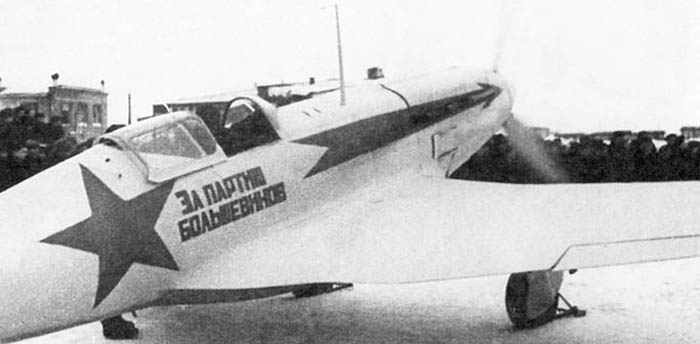 |
"Za Partii Bolshevikov" (For the Bolshevik Party), pilot V.V. Rybalko. It is the only plane of the group featuring a radio mast, but without boxes visible through the rear of the canopy, suggesting an only partial installation of the radio equipment. Image from "Unknown battles on the Moscow skies" of Hazanov Interview to V.V.Rybalko:
|
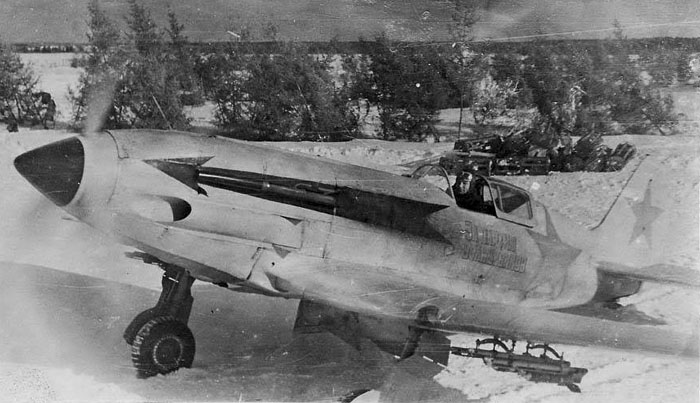 |
172 IAP was already equipped with LaGG-3s and Yak-1s, so the MiGs were passed to 122 IAP. Photo of "Za Partii Bolshevikov" during its early operative life with 122 IAP. The most surprising thing is the difference between the red of the stars and slogan, that appears very light possibly due to the use of a red filter on the camera, and the arrow and spinner that appear very dark. It is clear that these parts were painted with a different color, that could be a much darker shade of red if not something other than red. Image from http://ava.org.ru/iap/122.htm
Below: profile of MiG-3 '"Za Partii Bolshevikov" |
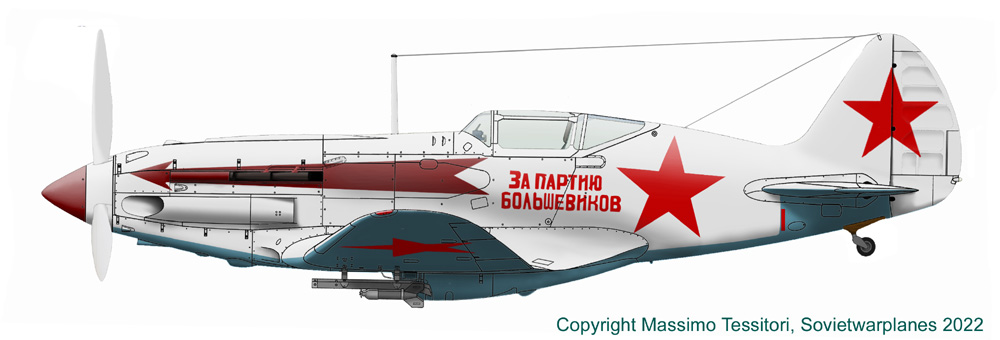 |
|
After the ceremony of delivery to 172 IAP and the successive passage
to 122 IAP, the plane 'Za Rodinu' was flown by V.V. Rybalko, the
same pilot that previously flew the white aircraft with a red arrow and
the slogan "Za Partii Bolshevikov". The plane appears on a movie during the Rzhev-Sychevsk operation, August 1942; it appears repainted in summer camouflage and apparently without the red arrows and the rocket launchers, but the slogan looks preserved, even if the detail is not clear: it looks as the first part of it was retouched with white paint. The canopy frames seem still white, probably due to a lazy repainting. The front part of the spinner seems to have preserved the red color, while the rear part with the spinner was repainted black. The camouflage itself is not fully clear, probably it was made with the usual AMT-4 green and AMT-6 black, but with some repaintings that could give the idea of more colours. The red star on the fuselage is not clear on these photos, but it appears distinguishable on a movie. The tail wheel is still fixed in open position, without doors and apparently without any flexible cover. Image from http://ava.org.ru/iap/122.htm |
|
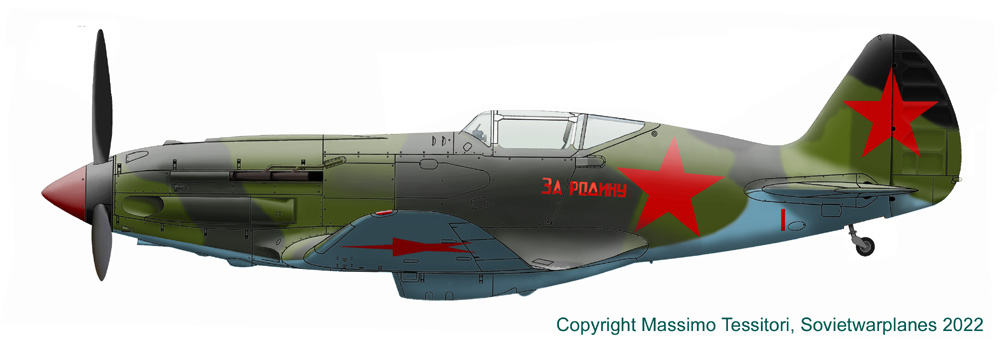 |
|
This photo of spring or summer 1942 shows the plane with the slogan
" Za Partii Bolshevikov" (For the Bolshevik Party" ) in service with 122
IAP; it was the same plane delivered during the ceremony to pilot
V.V. Rybalko of 172 IAP, but the pilot that flew it later, appearing on
the image, was Nikolai Sheyenko. The most interesting thing is that not only the slogan, but also the end of the red arrow are still visible on the photo. It is likely that the red front of the spinner was preserved too, while the rear part and the prop blades were repainted black. Other visible characteristics are the rocket rails and the white paint still visible on the canopy frames. The tail wheel, locked in open position, had a rubber or canvas cover; one can see the radio mast but not the boxes behind the canopy, suggesting an only partial installation. Image from 'Istrebitel MiG-3' of Medved, Hazanov, Maslov |
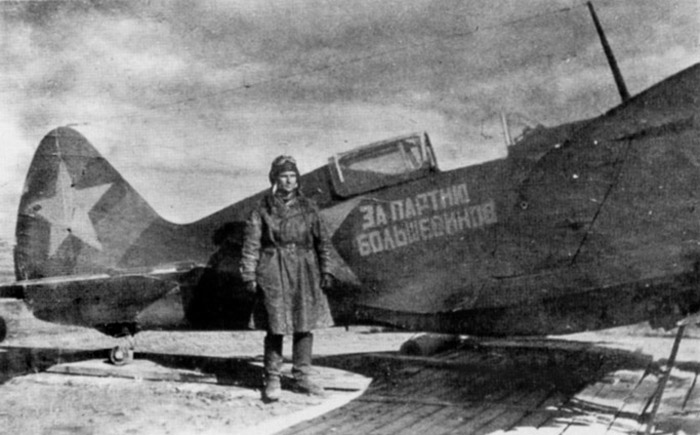 |
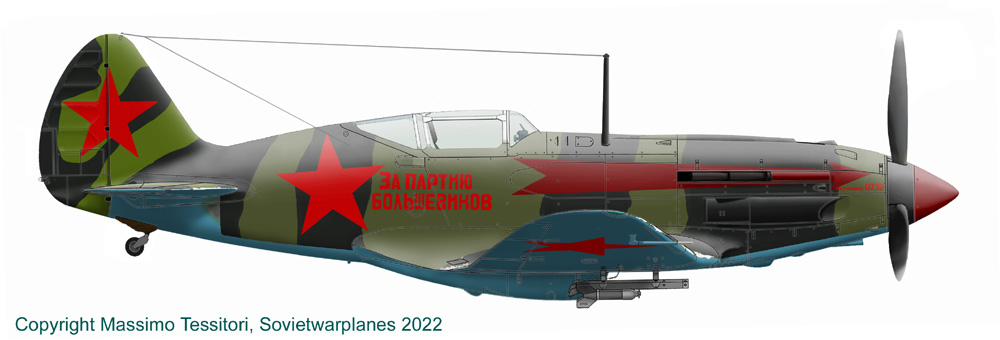 |
|
Disclaimer
This work collects also a lot of photos and drawings from many
sources, not always identified and mentioned.
If someone has some rights on the images here reproduced, please email to me
and I shall provide to remove or to credit them.
While the historical photos are of public domain (except where otherwise stated),
my color profiles and coloured photos are copyrighted.
If someone is interested in any use of them, please email
me; higher resolution version is available for printing purposes.
If someone has questions, critiques or corrections, or some further images to
show, please email to me.
Massimo Tessitori